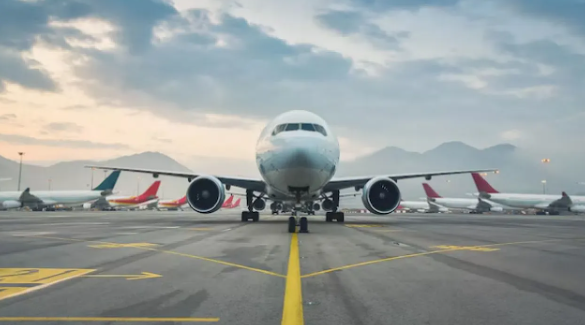Bharatiya Vayuyan Vidheyak 2024 (GS Paper 2, Government Policies)

Introduction
- The Bharatiya Vayuyan Vidheyak 2024, introduced by Civil Aviation Minister K. Ram Mohan Naidu in the Lok Sabha, represents a significant overhaul of India's civil aviation legislation.
- This new law is designed to replace the outdated Aircraft Act of 1934, aiming to modernize and streamline regulations governing civil aviation in India.
Need for the New Legislation
Challenges with the Aircraft Act of 1934
- The Aircraft Act of 1934, which established the framework for civil aviation in India, has been amended 21 times over the decades.
- These frequent changes have led to a complex and sometimes confusing regulatory environment.
- The Act's outdated provisions and piecemeal updates have made compliance and enforcement challenging.
Goals of the Bharatiya Vayuyan Vidheyak 2024
The new legislation aims to:
- Simplify Regulations: By repealing the old Aircraft Act and introducing a more straightforward set of rules.
- Align with International Standards: To ensure that India's aviation regulations meet global benchmarks.
- Enhance Clarity: By removing outdated rules and clarifying the regulatory framework for all stakeholders.
Key Features of the Bill
Repeal and Re-enact
- The Bharatiya Vayuyan Vidheyak 2024 proposes to replace the Aircraft Act of 1934 with a new, updated law.
- This approach seeks to eliminate confusion caused by the numerous amendments and establish a clear and modern regulatory framework.
Central Government Powers
The bill centralizes control over various aspects of aircraft operations under the federal government. This includes:
- Aircraft Design and Manufacturing: Streamlining the process and ensuring compliance with safety standards.
- Maintenance and Safety: Overseeing ongoing maintenance and enforcing safety regulations.
- Accident Investigations: Establishing procedures for investigating aviation accidents to improve public safety.
Supporting ‘Make in India’
The legislation supports the ‘Make in India’ initiative by:
- Encouraging Local Production: Promoting the design and manufacturing of aircraft within India.
- Improving MRO Services: Enhancing maintenance, repair, and overhaul services to strengthen the country’s aviation infrastructure.
Response to Opposition
Criticism and Defense
- The bill has faced some criticism due to its Hindi title.
- Critics argue that it may not fully represent the diverse linguistic landscape of India.
- In response, Minister K. Ram Mohan Naidu defended the choice, stating that while the title is in Hindi, the main content of the bill is accessible in English, ensuring that the legislation remains comprehensible to all stakeholders.
Historical Context: The Aircraft Act of 1934
Origins and Purpose
The Aircraft Act of 1934 established the regulatory framework for civil aviation in India. It empowered the government to create rules for aircraft safety and operations, leading to the formation of the Directorate General of Civil Aviation (DGCA). The Act focused on:
- Licensing: Establishing requirements for pilots and operators.
- Aircraft Safety: Setting standards for aircraft maintenance and safety.
- Accident Regulation: Implementing procedures to handle aviation accidents.
Evolution Over Time
- Since its enactment, the Aircraft Act has been amended multiple times to incorporate new technologies, address security concerns, and adapt to evolving aviation standards.
- Despite these updates, the Act has remained complex and challenging to navigate, highlighting the need for a comprehensive overhaul.
Conclusion
- The Bharatiya Vayuyan Vidheyak 2024 marks a pivotal moment in the evolution of India’s civil aviation sector.
- By replacing the outdated Aircraft Act of 1934, the new legislation aims to simplify regulations, align with international standards, and support the country’s ‘Make in India’ initiative.
- While the bill has faced some opposition regarding its title, it represents a forward-looking approach to modernizing India’s aviation laws and improving the overall regulatory environment.


